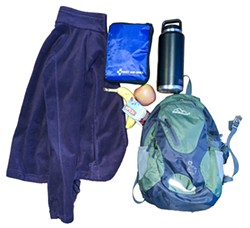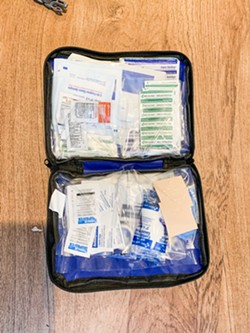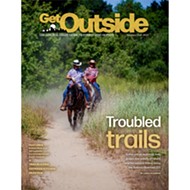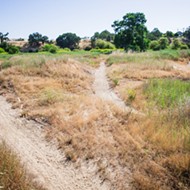Gear Hub: The Santa Barbara County Fire Department offers outdoor safety tips
Be prepared
By Bulbul Rajagopal[
{
"name": "Newsletter Promo",
"id": "NewsletterPromo",
"class": "inlineCenter",
"insertPoint": "4",
"component": "15264767",
"requiredCountToDisplay": "0"
},
{
"name": "Ad - Medium Rectangle CC01 - 300x250 - Inline Content",
"class": "inlineCenter",
"insertPoint": "8",
"component": "15582119",
"requiredCountToDisplay": "12"
},{
"name": "Ad - Medium Rectangle LC01 - 300x250 - Inline Content",
"class": "inlineCenter",
"insertPoint": "18",
"component": "15582122",
"requiredCountToDisplay": "22"
},{
"name": "Ad - Medium Rectangle 9 - 300x250 - Inline Content",
"class": "inlineCenter",
"insertPoint": "28",
"component": "15582121",
"requiredCountToDisplay": "32"
}]
“We have a lot of hiking emergencies up here. [When] hiking trails, people can have the misperception of hiking. They are right here and they can see the city,” Safechuck said. “For the most part there is nothing to worry about until something goes wrong. They roll their ankle, they become dehydrated.”
At a minimum, the first thing he recommends people do before packing up to hit the trails, camp overnight, or backpack for a couple days is to get CPR and first aid certified—which is a foundation for first responders, too, he said.
“You learn about situational awareness and how to not become injured, and how to prevent others from becoming further injured,” Safechuck said. “That kind of training for CPR and First Aid is going to gear your mind for the potential things [you] might need for the type of environment [you] might be choosing to get into.”
Before leaving, look at a trail map; be sure you understand the hike’s difficulty levels, estimated duration, and weather conditions; and tell a friend or relative where you are going and what time you’ll be back, he said. Firefighters and first responders spend a lot of time training and recreating in the Los Padres National Forest and other large forests, and often see people lost on the wrong trail or overexerted.
“It’s not about getting to the top, that’s not the goal or accomplishment. The accomplishment is getting outside and seeing something new. You don’t have to go far or to the point where you are overly exhausted,” Safechuck said. “People take the ability to walk for granted; when you’re not injured you don’t think about it, but when you have an injured foot walking becomes a major task.”
People should take supplies with them, no matter what: water, a first aid kit (which includes bandages, rubber gloves, and antiseptics), a flashlight/headlamp, sunscreen, a snack, and a signaling device like a whistle in case of an emergency.
“A small fanny pack can fit all of this stuff in it, but a small hydration backpack would be ideal,” he said.
It’s also important that people dress appropriately for the weather. If it’s sunny, make sure your body is protected by sleeves, or wear sunscreen, and have something to keep warm if the sun goes down before the hike is over.
“Don’t go hiking if it’s going to be 100 degrees out. Go to the beach. Find alternative ways to experience nature,” Safechuck said. “Don’t go to the backcountry when it’s snowing.”For a wilderness camping or backpacking trip, he suggested people carry a GPS tracking device that can signal to first responders, pack an adequate amount of food, carry a small canister of bear spray, and be aware of what animals are in the area you are exploring.
“I’m not telling people to go out with a 20-day supply, but understand what are the most likely things [they] could face and how [they] can mitigate those,” Safechuck said. “They can go to any outdoor supply store, they have everything there. Figuring out what works best for you is important.”









